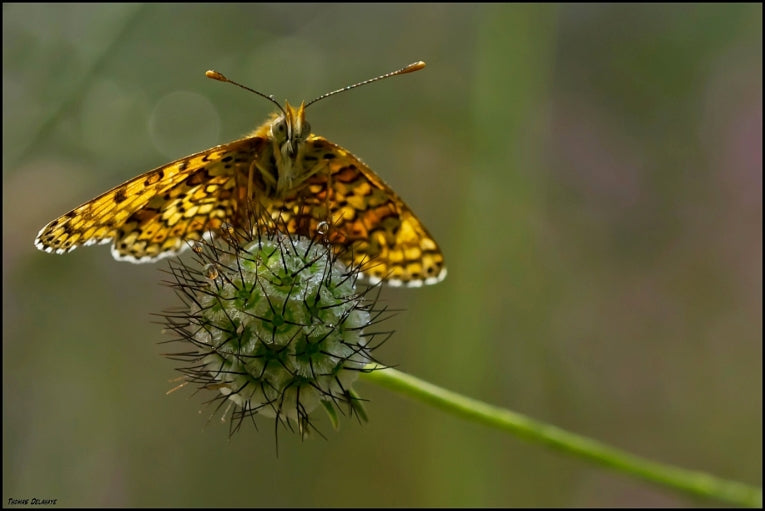The Granville Fritillary, Melitaea cinxia, is rare and endangered in parts of its range. On PT (Pikku-Tytarsaari) Island in the Russian part of the Baltic Sea, the population is 100 on a 10 hectare area of suitable habitat. The island itself is about 1km x 2km in size. The larvae don't produce as many adults as the nearby Aland Islands and the adult metabolic rate is much less than there. Genetically, diversity is low and the genetic load is high. This high load probably causes the metabolic rate difference. One thing that does seem obvious is their ability to hold on to their coastal substrate. Investigating their situation and its relevance to all animals adapting to such habitats were Anne Duplouy and Ilkka Hanski.
In their experiments, the Glanville fritillaries were found to grip tightly onto a flat smooth wood surface in the presence of a cold draught from a hair drier under low light intensity. "Wind" speed was assessed at between 3.1 and 18.9m s-1. Then the butterflies were tested from various Baltic populations.
With the low genetic diversity of a small isolated population, some harmful mutations can build up in the insect. Their adaptations could be restricted by this, but any strong selective force such as high wind would be expected to have an effect. The legs and claws could give more grip and gain survival value. On mainland and Aland Island populations, greater grip would tend to restrict take-off speed and therefore increase the success rate of their predators!
The results of claw measurements from the fritillary, gathered in Sweden and Estonia as well as PT Island, proved that the island population had much more curved tarsal claws, although the length of the tarsus and the claw surface area were virtually the same. The curvature had means of 97.7° as compared to 102.3° on the mainland sites (ie. a mean difference of 4.6°)
Next came the test results : wind speed on the island was an average of 3.92m s-1 , but the island butterflies held on to flat smooth wood in the specially designed experiment until a hair drier was placed 35.9 cm away. This corresponds to a force of 111. Aland island butterflies held on only till a distance of 50.9cm, an air force of only 45.5.
These results indicate that hanging on to moving flowers and, in emergency, simply staying on dry land, seems to be a survival strategy for the fritillary. Accidental emigration and pollination are key to adaptation. Perhaps, the authors suggest, even the plants have petals adapted for hanging on, in order to get themselves pollinated! Anne Duplouy and Ilkka Hanski wrote the paper after their dedicated research at the University of Helsinki, publishing in Biology Letters today.










